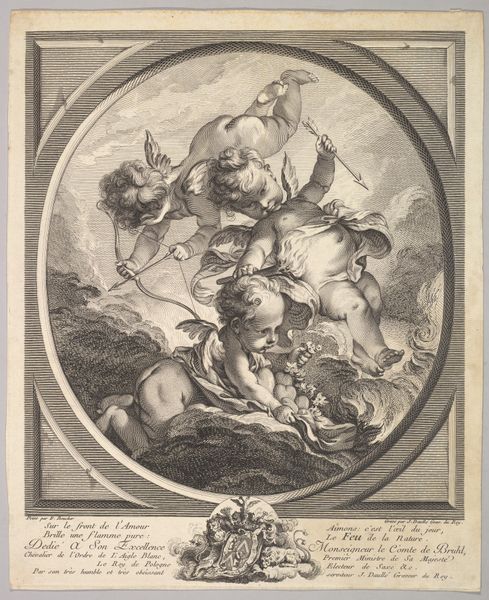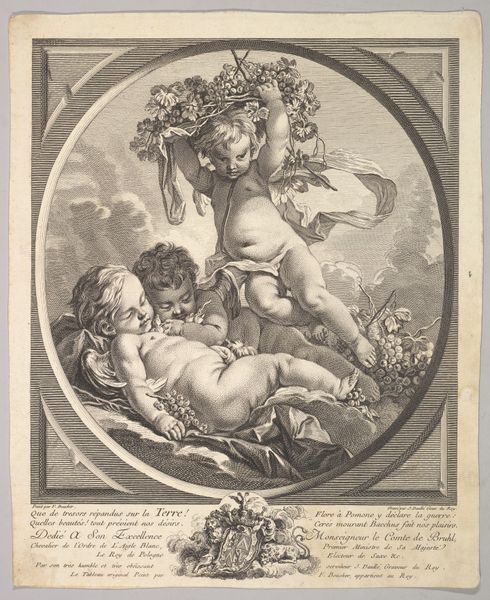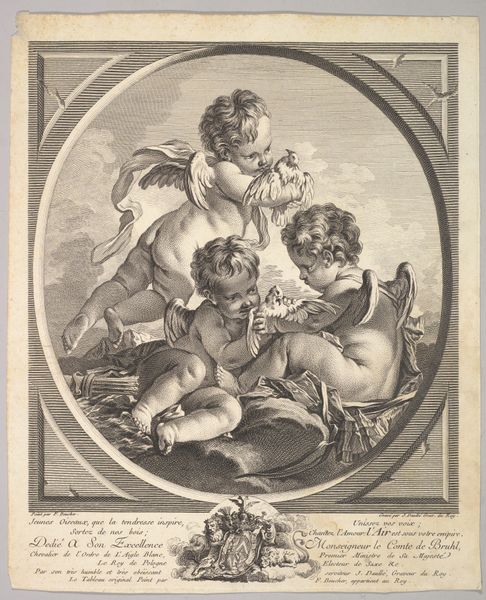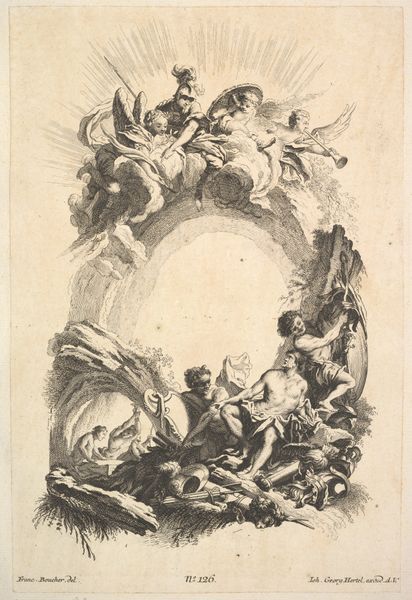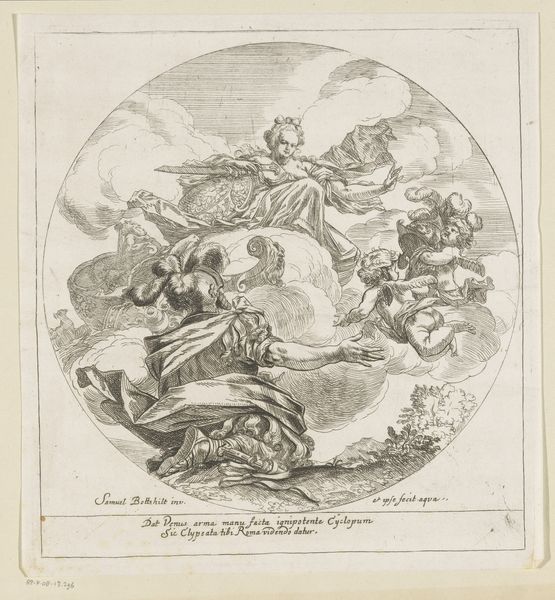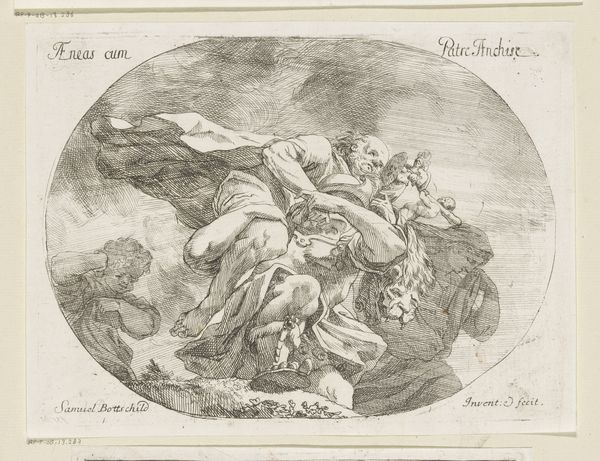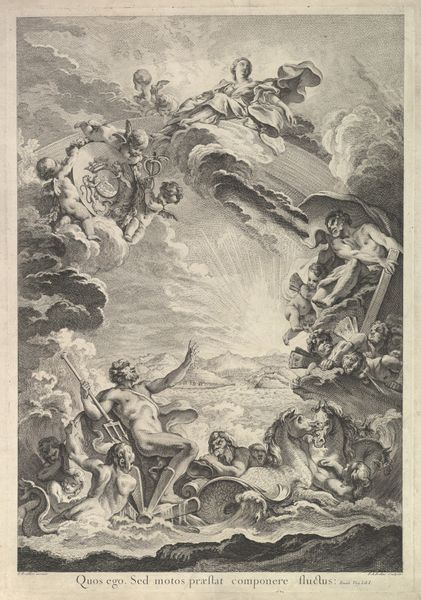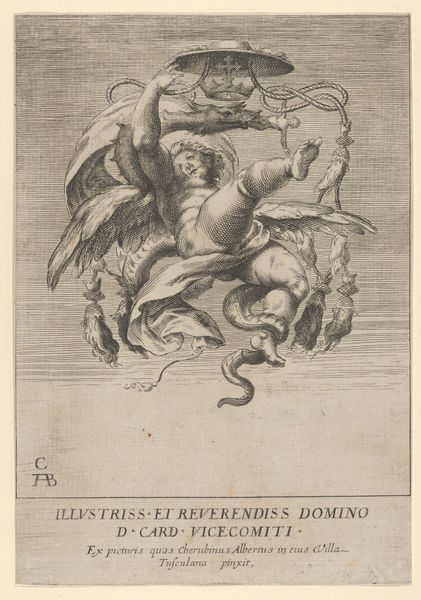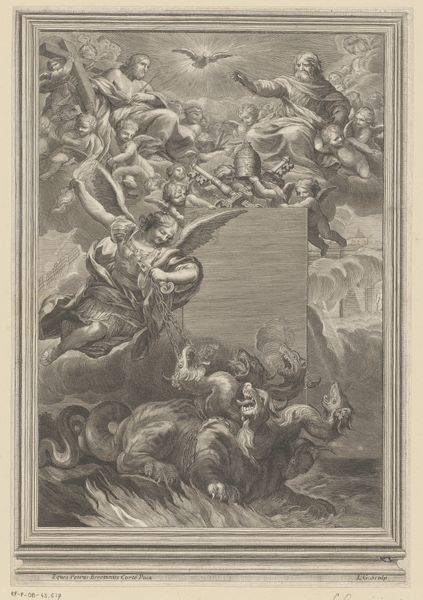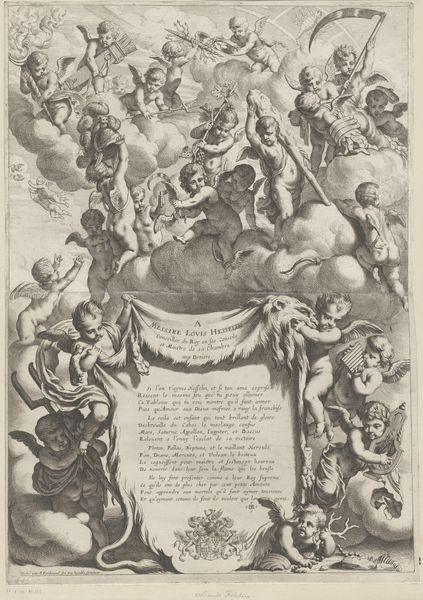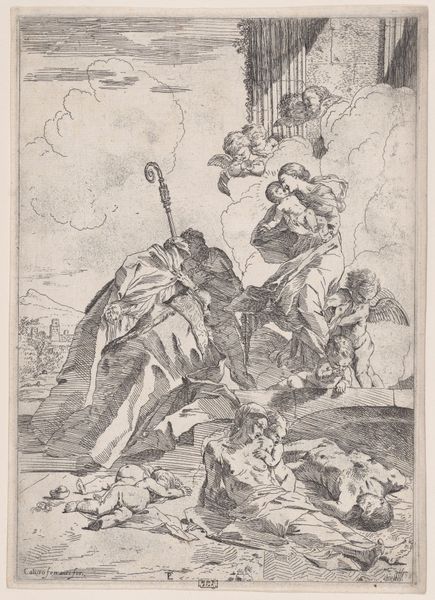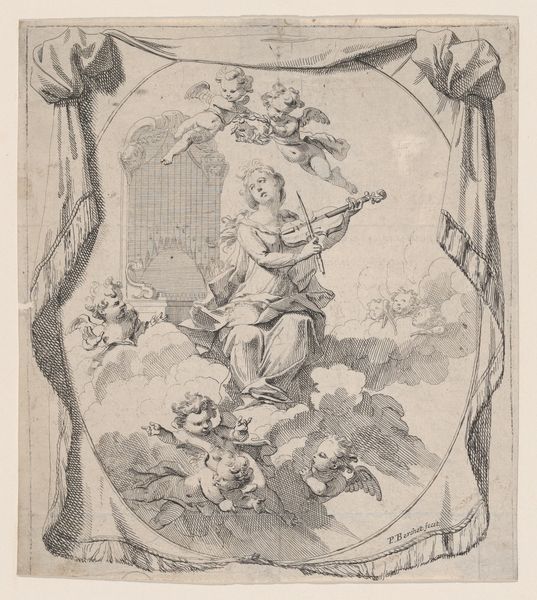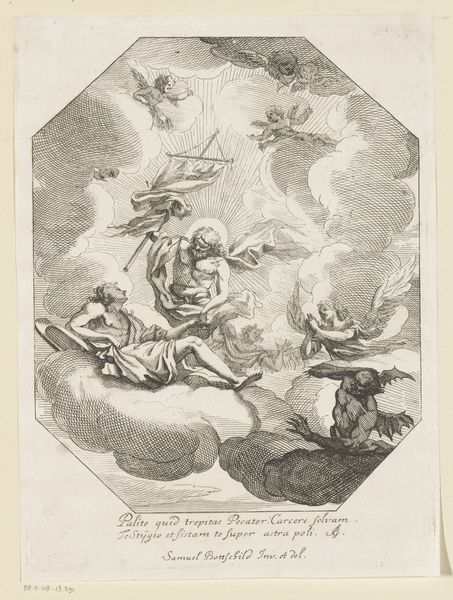
drawing, print, engraving
#
drawing
#
allegory
#
baroque
# print
#
figuration
#
engraving
Dimensions: Sheet: 12 3/4 × 10 1/2 in. (32.4 × 26.7 cm)
Copyright: Public Domain
Curator: Just look at this baroque print titled "Water," made sometime between 1743 and 1753. It's by Jean Daullé and it's an engraving, currently residing at the Met. The incredible detail for something made with an engraving tool is immediately apparent. Editor: My first impression is pure cherubic chaos! These plump, playful babies dominating a frothy sea suggest innocence, but there's a kind of opulent excess here, typical of baroque sensibilities. I wonder how "water" is presented within a historical and social context. Curator: Note how the artist renders the different states of matter --the movement of the water, the way the ribbon flows. How did Daullé use those specific materials, and the social position that comes from being engraver to the King, to develop this understanding? And what of the role of the engraver, of printmaking in distributing power by circulating allegorical images like these? Editor: Precisely! The inscription dedicates the work to Count Bruhl, so this wasn’t merely decorative; it likely functioned within the circles of power and patronage, a form of baroque propaganda perhaps? I wonder too, if "Water" alludes to contemporary issues around access to resources for the broader population and is filtered through Daullé’s specific socio-political lenses, presenting water in a rather carefree way compared to, say, realities. Curator: The very act of commissioning something like this suggests ideas about leisure, access, wealth, all entwined. It speaks to specific networks and infrastructures. Editor: Considering today's issues—water rights, environmentalism—it prompts a dialogue about historical access versus current urgency. Curator: Exactly. By analyzing material conditions, we challenge notions of pure aesthetic value, uncovering layers of political, social, and economic relations at play. Editor: It certainly makes you ponder how representation then serves or challenges reality now. Thanks for exploring this work with me today! Curator: A pleasure, it is always fascinating to think about material culture in the context of its creation and the conversations it encourages today!
Comments
No comments
Be the first to comment and join the conversation on the ultimate creative platform.
